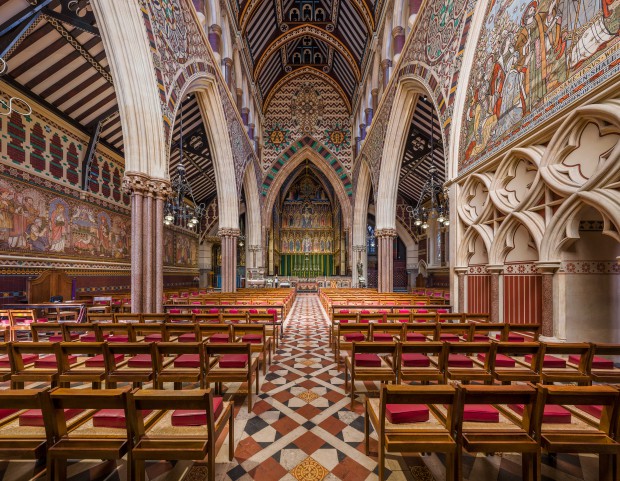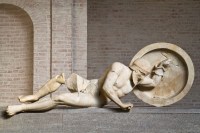John Betjeman, the patron saint of English parish churches, once warned against praising British buildings too much. Be careful before you call Weymouth the Naples of Dorset, he said. How many Italians call Naples the Weymouth of Campania?
Saint John was spot on, of course. When it comes to the pure ideals of church architecture, London isn’t a patch on Rome or Florence. The Holy Redeemer Church in Exmouth Market, Islington, may be inspired by Santo Spirito in Florence, but it doesn’t match, let alone surpass, its beauties. Still, as Michael Hodges’s scatty book shows, my God, there’s an awful lot of beauty, and intrigue wrapped up in London’s 1,200 Anglican and Catholic churches.
Even this hefty volume can only squeeze in 420 of them. All the same, after a lifetime of London church-crawling, there are hundreds I’ve never seen. My next target is St Andrew’s, Kingsbury, home to the Greatest Hits of the Gothic Revival: altar by Pugin; litany desk by Burges; lectern by Butterfield; chancel screen, reredos, font and pulpit by Street. My cup runneth over.
Hodges throws in a lot of juicy anecdotal information. I didn’t know that T.S. Eliot worshipped at my local church, St Silas’s, Kentish Town, a miniature Albi cathedral. Or that Graham Greene got married at St Mary’s, the charming little Catholic church in the Tuscan style in Hampstead.
Collecting a lot of London churches together produces some pleasing patterns. Churches on the edge of London were less likely to be remodelled — or bombed by the Luftwaffe. So you find more Norman work in the suburbs. How I long to visit St Mary Magdalen, East Ham, with its Norman blind arcade and chancel, dominated by a clumsy-classical monument to a 17th-century Earl of Westmoreland.








Comments
Join the debate for just £1 a month
Be part of the conversation with other Spectator readers by getting your first three months for £3.
UNLOCK ACCESS Just £1 a monthAlready a subscriber? Log in